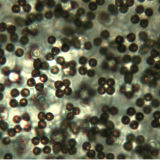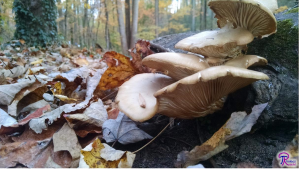#019: Apiosporina morbosa, Black Knot of Cherry [Archived]
Note: this is an archived post. You can view the current version of this post here. And now for something completely different: identifying trees from a long way away. If you’ve ever tried to identify deciduous trees in the winter, you know how hard it is to identify a tree based on its bark. However, thanks to the fungus Apiosporina morbosa, identifying cherry trees in winter becomes a walk in the park. Apiosporina morbosa is an ascomycete that parasitizes cherry and plum trees. Commonly known as “black knot,” the fungus forms black, dry, cracked, irregular swellings on branches which grow to surround the branch. According to Michael Kuo, these knots look like “dried cat poop on a stick.”* Although this is not the most attractive-looking fungus, it is very helpful for identifying cherry trees from hundreds of feet away, especially in winter when the knots are not hidden by leaves.

![#019: Apiosporina morbosa, Black Knot of Cherry [Archived]](https://www.fungusfactfriday.com/wp-content/themes/hueman/assets/front/img/thumb-medium-empty.png)





![#011: Characteristics of Kingdom Fungi [Archived]](https://www.fungusfactfriday.com/wp-content/themes/hueman/assets/front/img/thumb-small-empty.png)

